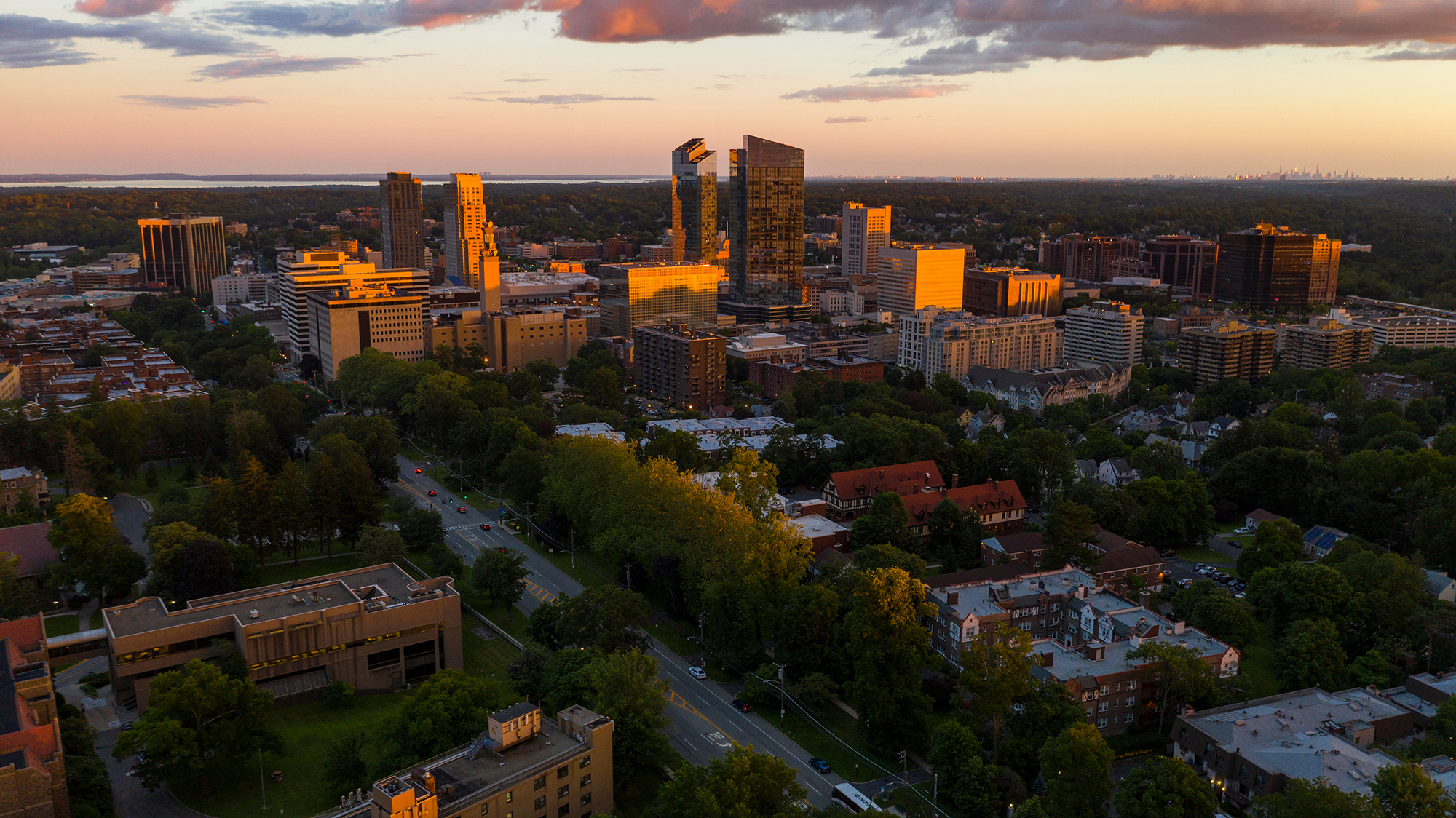A comprehensive guide to empty nesting, downsizing and retiring in Westchester and beyond
By Josephine D’Ippolito
Stepping into the next chapter of life, which is usually triggered by kids leaving home or a transformative decision to retire, can feel both freeing and elusive. It’s not just about moving to a smaller home; it’s about strategically moving towards a lifestyle that fits your evolving needs. Think about it: that big house, those hefty taxes, and the never-ending household chores. Once the nest is empty, your life is forever changed.
Suddenly, you have this newfound freedom, but how on earth do you decide what, when, where and how to make your move? We know it’s overwhelming, so we’re here to serve as your guide, unveiling some of the best empty-nester communities in and around Westchester, as well as offering inspiration for jet-setting into retirement with destinations that span the globe.
The reasons for embarking on this next chapter are fairly common, but the journey itself? Well, that’s uniquely yours. Let’s get started.
Trends in and around our region
Downsizing in and around Westchester can be difficult. According to Kathleen Usherwood, a Compass realtor in Westchester and Fairfield counties, this period of time is challenging in more ways than one.
“It’s difficult to decide where to go and when to go, and it’s very hard to declutter and downsize one’s life after living somewhere for 30+ years,” Usherwood explains. “There are retirement consultants who can help. Family and friends are very important guides, and a professional, thoughtful real estate agent can be very effective at presenting options.”
Adding to the complexity of downsizing in our area are the soaring home prices and limited inventory. A review of the Houlihan Lawrence website, where monthly reports are neatly organized by town and county, reveals a 28 percent decrease in the number of single-family homes available for sale in Westchester County at the end of 2023, compared to the end of 2022.
While the general real estate market in the area is challenging, opportunities to purchase a downsizer-friendly home, often a condo or townhouse with minimal home maintenance responsibilities, are even more limited. These factors have led to a shift in how our neighbors search for homes.
“While people once focused on a specific town or area, the current scarcity of inventory has led to a more open-minded approach,” explains Tracy Cunniff, who has been a realtor in Houlihan Lawrence’s Katonah office for the past 40 years.
“Understanding different communities and adopting a strategic plan is crucial,” says Barry Graziano, a regional manager at Houlihan Lawrence. “A knowledgeable realtor can play a pivotal role in this endeavor.”
Because downsizing is a combination of a smaller living space and lower expenses, the frustration of high real estate taxes in Westchester hits hard once the kids are no longer in local schools. According to Usherwood, moving just a few miles away to Connecticut can achieve this goal without compromising one’s lifestyle.
“Connecticut is an attractive option for those looking to ease the burden of real estate taxes,” she explains. “It’s a factor that often lures Westchester residents across state lines to Fairfield, where real estate taxes are notably lower. In Connecticut, you’ll find everything from affordable 55+ communities to more luxurious choices.”

Pros and cons of 55+ communities
Designed exclusively for those age 55 and older, 55+ communities cater to the lifestyle preferences and needs of older adults, but there are pros and cons.
Most 55+ communities offer maintenance-free living. Services such as lawn care, exterior maintenance and snow removal are often provided. “People move to these communities to ease the burden of maintaining a home,” Cunniff explains. “These services allow individuals to enjoy a hassle-free retirement.”
Communities may also offer amenities—such as fitness centers, golf courses and swimming pools—as well as home designs tailored to the needs of seniors.
“Homes in these communities typically feature single-floor living, with high-end residences even offering elevators,” Usherwood describes. “The primary suite and laundry facilities consistently occupy the first floor, and door openings and bathrooms may be intentionally designed to be larger, accommodating walkers or wheelchairs for aging residents.”
These communities, which often include organized events, clubs and activities, offer a positive social aspect that cannot be understated. This social interaction among similarly aged peers can contribute to an engaging living environment for seniors.
But 55+ communities may not suit everyone. The age restriction might deter those seeking a more diverse or dynamic environment without limitations across age groups. Some may feel isolated from family members, as a visit to a 55+ community may not be the preferred vacation destination for adult children or grandchildren. Additionally, concerns about the perceived expense of monthly Homeowner Association (HOA) fees could be a deciding factor for others.
55+ communities at every price point
(Prices reflect a two-bedroom unit.)
Mount Kisco: Woodcrest Village Condos, starting around $400,000
Carmel: The Retreat at Carmel Condominiums, starting around $400,000
Shrub Oak: Trump Park Residences, starting around $500,000
Danbury: The Rivington, starting around $500,000
Cortlandt Manor: Glassbury Court, starting around $600,000
Ridgefield: The Regency Townhouses, starting around $800,000
Armonk: The Byram, starting around $1 million
Scarsdale: 1 Christies Place, starting around $1.4 million
Where to go: great towns and communities for downsizers
There are a plethora of empty-nester communities in the area, catering to a diverse set of preferences. Whether you’re looking to laze on the beach, seeking a mini-Manhattan experience, searching for a 55+ community, placing a premium on walkability or hoping to indulge in luxury living, there’s a place that will align with your vision, spanning various price points.
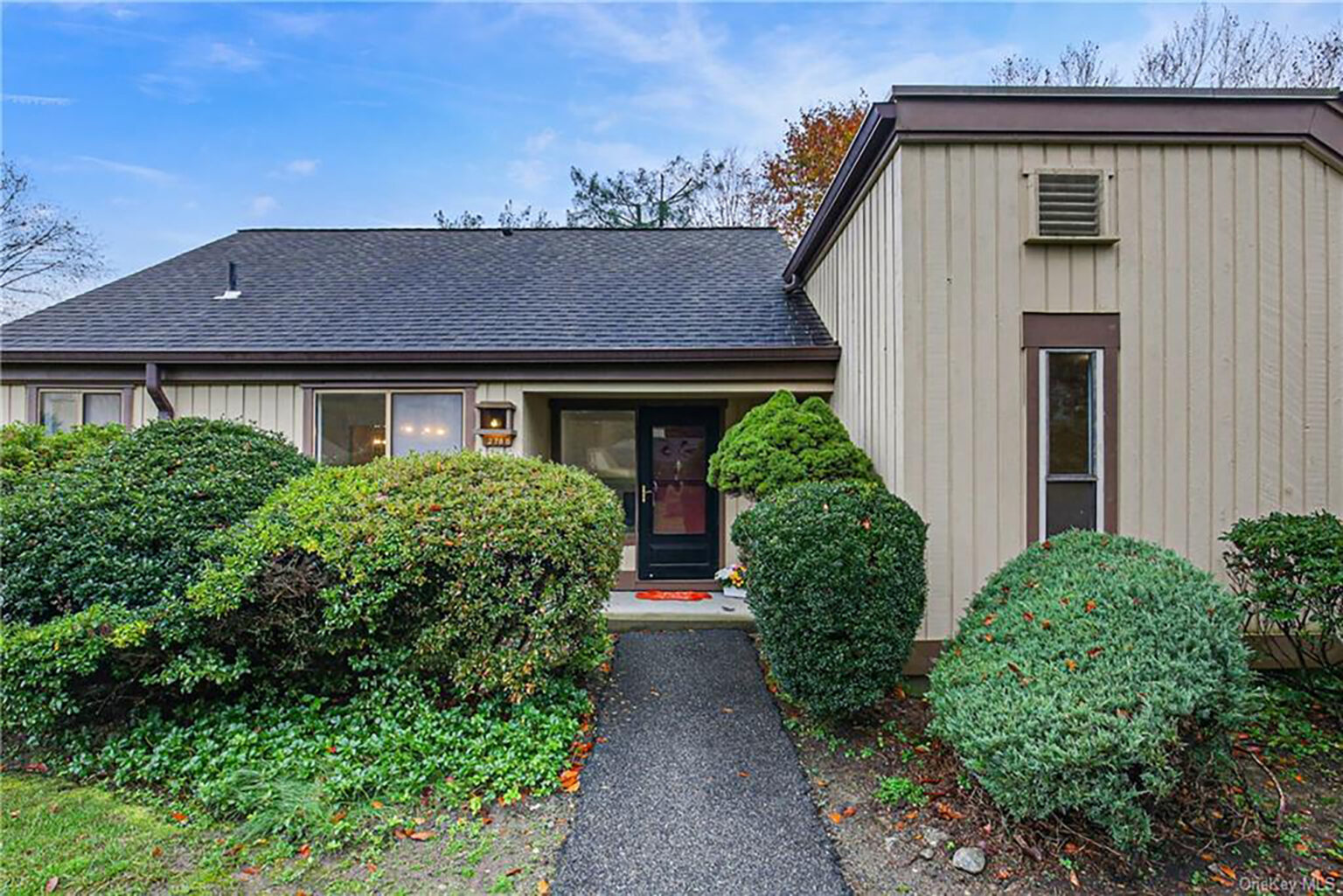
Best town onto itself: Heritage Hills, Somers
Heritage Hills spans 1,100 acres with 2,600 condos. Cunniff believes the extensive range of amenities offered at Heritage Hills makes it a popular choice for retirees.
“Thanks to the five pools, numerous tennis and pickleball courts, and the golf course, residents here enjoy regular visits from their children and grandchildren,” she says. “Add to that the convenience of nearby shopping and restaurants, and Heritage Hills stands out as a truly unique complex in the area.”
Two-bedroom condos in Heritage Hills are priced between $500,000 and $600,000.
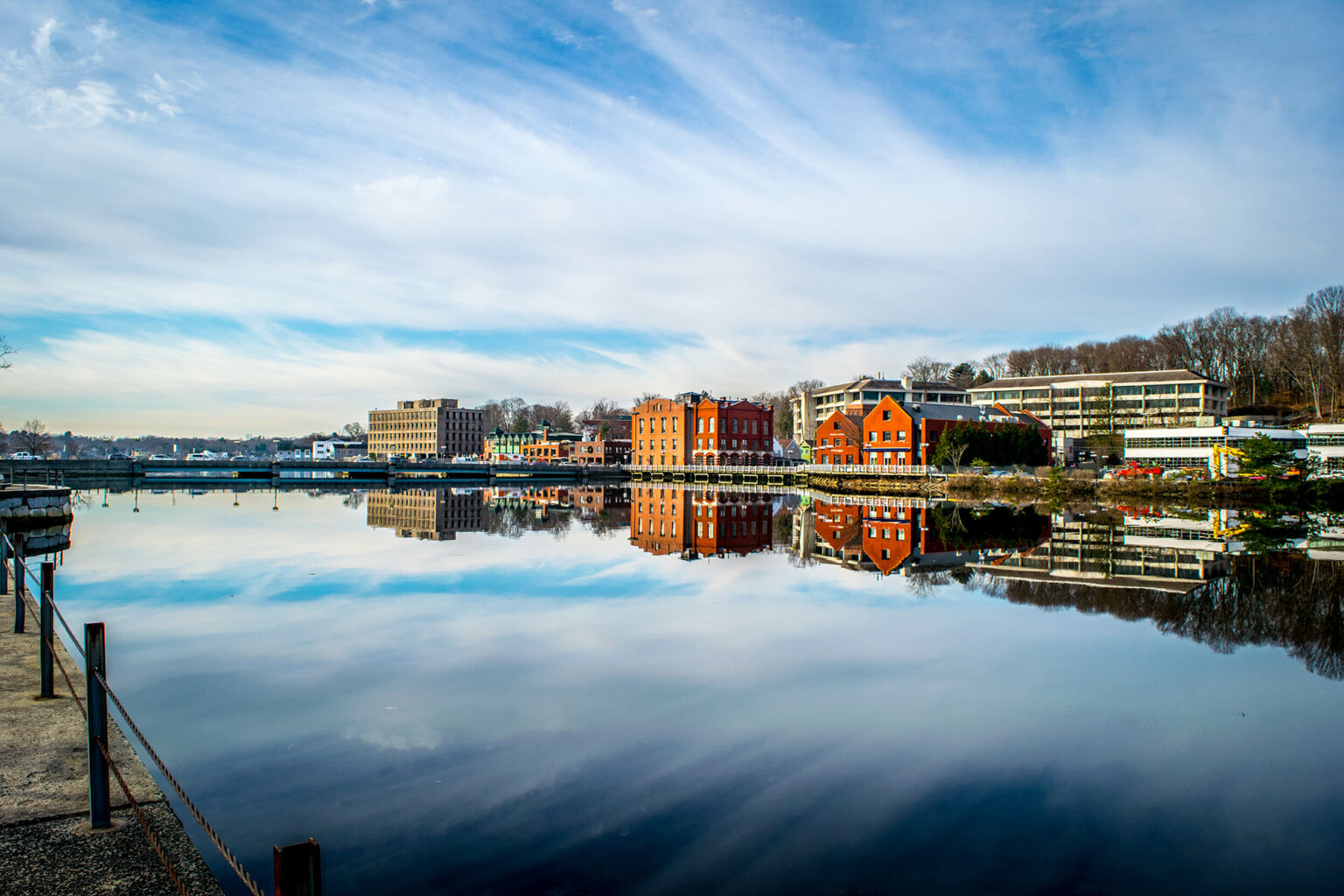
Best for beach goers: Westport
Known for its beautiful Compo Beach on the Long Island Sound, Westport is a sophisticated waterfront town. Terra Nova is a luxury, intimate gated community of 54 townhomes sized at least 2,300 square feet. It offers amenities such as a community pool and clubhouse, and is located just minutes from Westport’s shopping and beaches. A two-bedroom, two-and-a-half bath home at Terra Nova sells for around $1.4 million.

Most like Manhattan, Westchester County edition: White Plains
White Plains is a bustling, diverse city with plentiful shops, restaurants and cultural attractions. During rush hour, trains to Manhattan run every twenty minutes, making morning commutes painless. There are many condominium and cooperative buildings in White Plains, ranging from affordable to expensive, old to new. Westage Towers offers spacious condos with large balconies, a community pool, a fitness center and 24-hour security, all within walking distance to Metro-North and downtown. A two-bedroom, two-bath home at Westage sells for around $540,000 to $760,000.
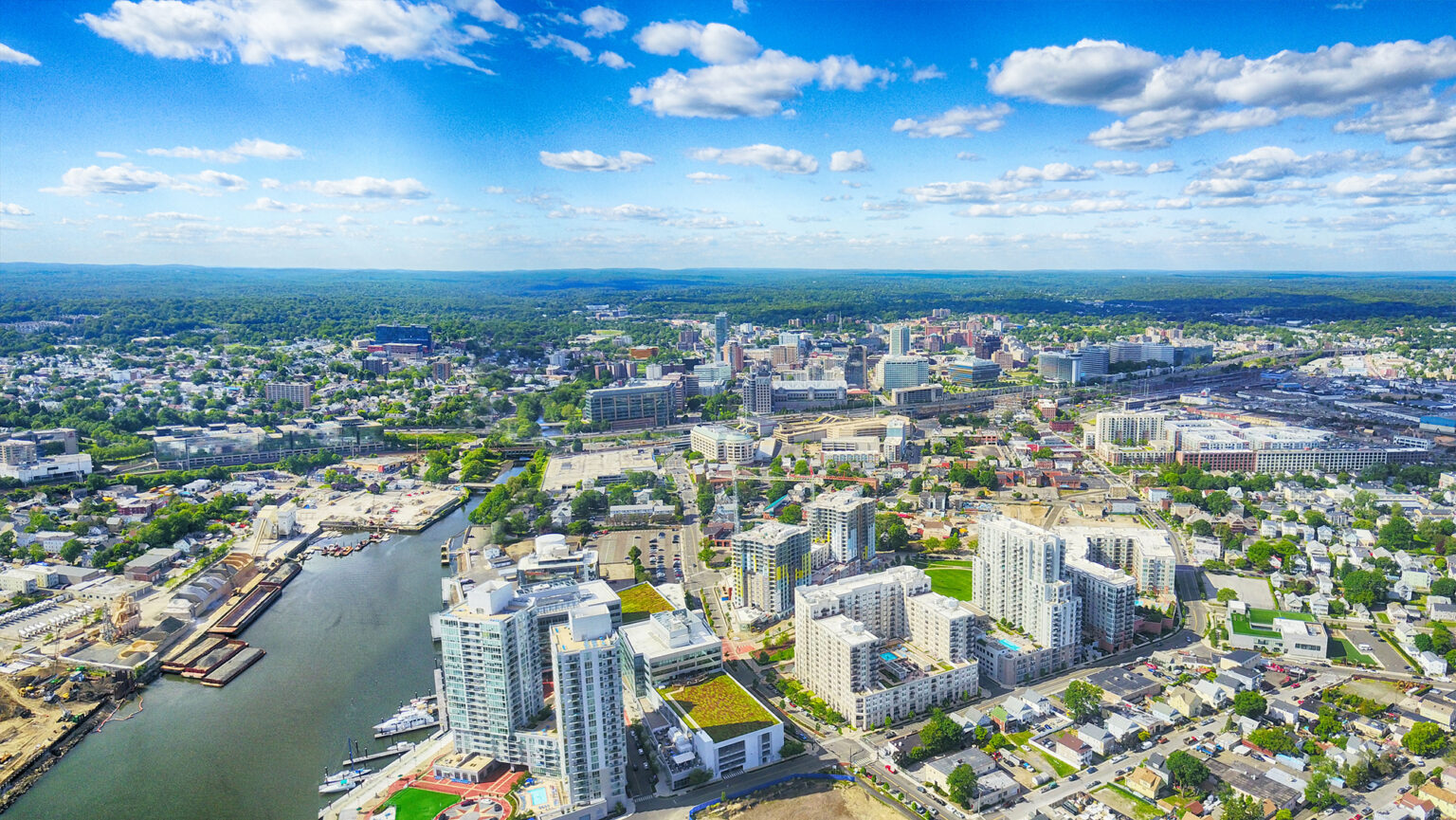
Most like Manhattan, Fairfield County edition: Stamford
Downtown Stamford, the Connecticut version of White Plains, brims with quality restaurants, bars, entertainment venues and shopping. The Classic is a luxury building with a rooftop pool and gym, as well as a private dog park within the building. Plus, it’s located within walking distance of Stamford’s nightlife. A two-bedroom, two-bath home at The Classic recently sold for $520,000.
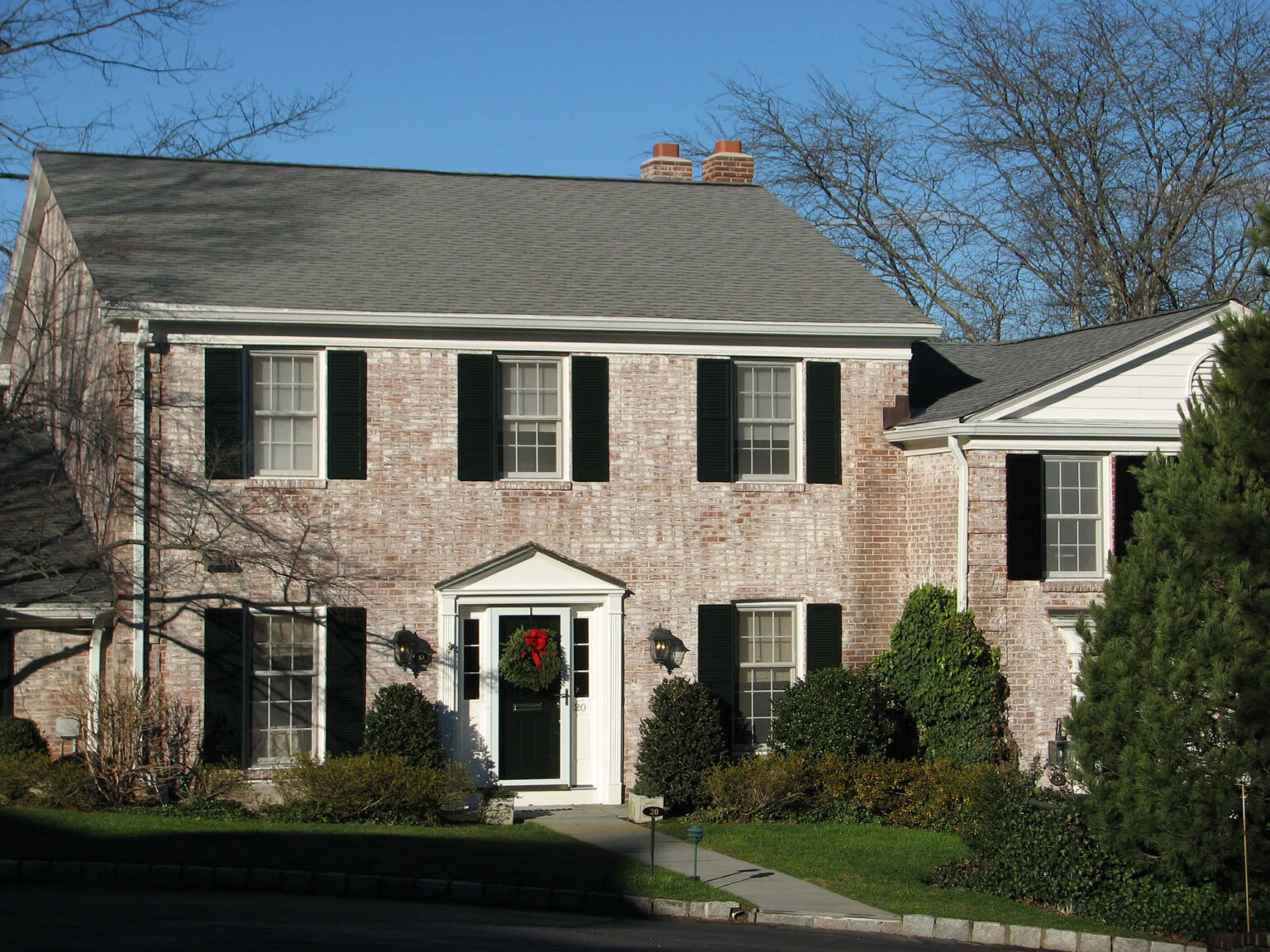
Most charming in-town complex: Pride’s Crossing, New Canaan
Pride’s Crossing is an intimate, upscale community of 51 townhomes, steps away from downtown New Canaan. Often considered one of the prettiest walking towns in the area, New Canaan has shops, restaurants and a Metro North train station. Built to resemble old Georgian brick homes, the Pride’s Crossing complex offers a community pool and private patios. Two-bedroom, two-bath townhouses sell for about $1 million.

Best views: Tarrytown’s waterfront condominiums
Tarrytown’s waterfront condominiums, primarily built in the last decade by various developers, offer breathtaking views of the Hudson River and the Mario Cuomo (formerly Tappan Zee) Bridge.
“With vibrant downtown scenes, nearby theaters and restaurants, the Tarrytown waterfront has emerged as a growing favorite among empty nesters,” says Usherwood. “And there’s a 5 p.m. dog party every day on the Tarrytown Hudson walkway, where everyone gathers with their furry companions!”
Two-bedroom, two-bath waterfront condos sell for upwards of $1 million.
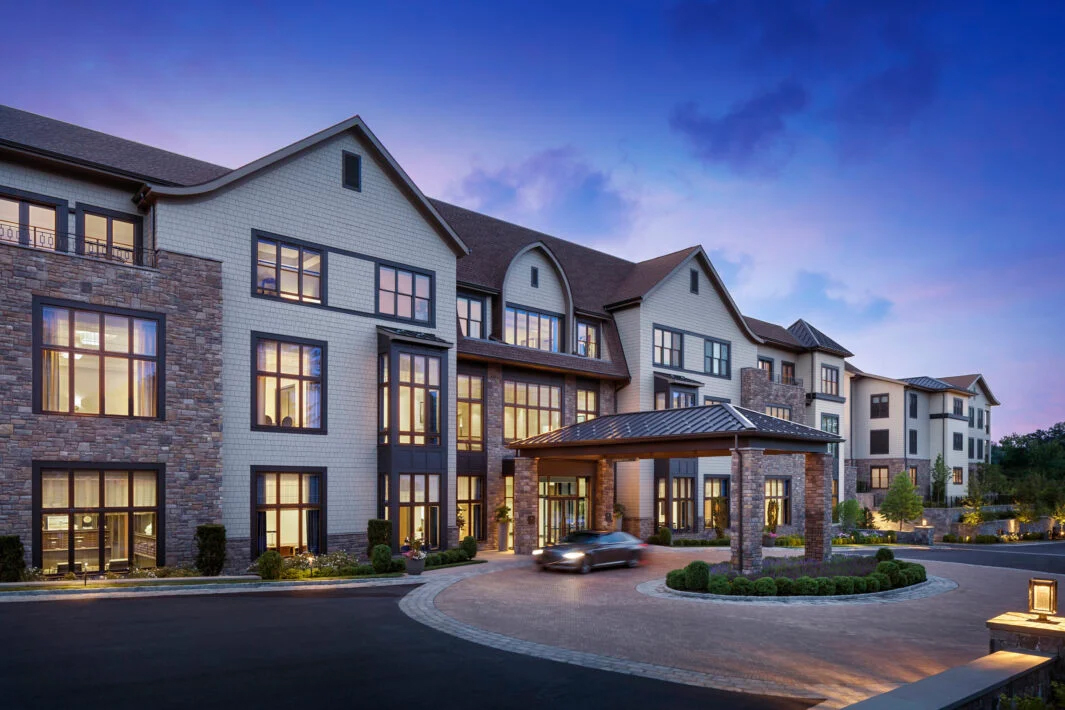
Most extravagant: St. Regis Residences, Rye
For those dreaming of living like Eloise, the St. Regis Residences in Rye, a 92-unit luxury 55+ condominium complex, is a dream come true. Situated on seven acres and offering amenities like a 15-seat theater, a golf simulator, a boardroom and an art gallery, along with guest suites and a robust fitness center, St. Regis offers the ultimate luxury lifestyle. A two-bedroom home sells for around $1 million to $1.85 million.
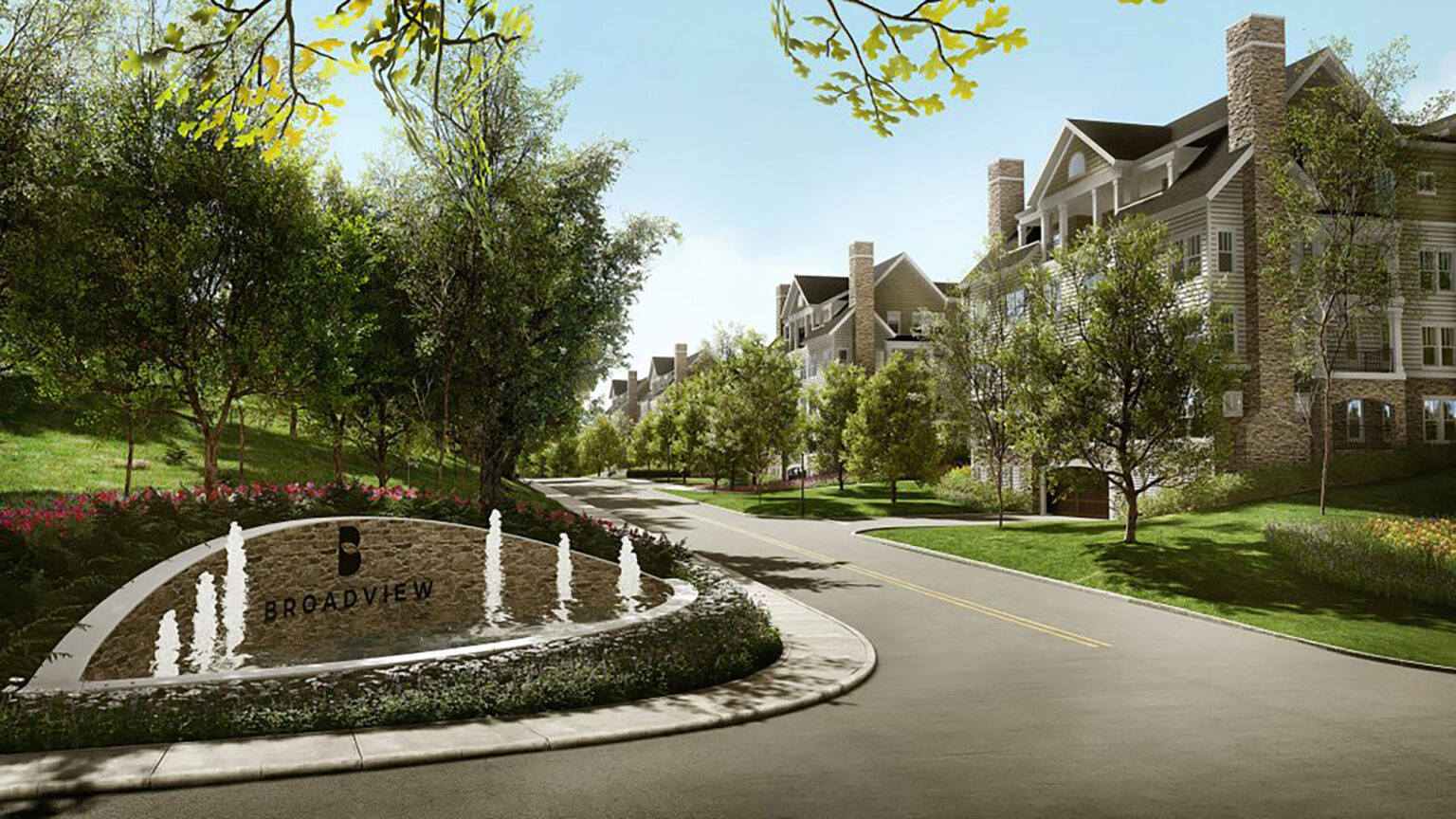
Best for lifelong learners: Broadview at Purchase College
Broadview at Purchase College, known as a University Retirement Community (URC), is a high-end senior housing complex designed to create multi-generational connections and foster lifelong learning. Residents of the complex, which boasts 220 units, can take college classes and have access to the school’s facilities. However, residents do not own homes in the traditional sense. Instead, for a one- or two-bedroom luxury apartment, they pay a one-time fee (anywhere from $300,000 to over $2 million), which will be reimbursed to them at 90 percent if they move, or to their family if they pass away. In addition, they will pay monthly fees ranging from $4,000 to $10,000.
Moving away
Gilen Chan and Gene Preudhomme, a semi-retired couple with backgrounds in law, are the dynamic hosts behind the “Retire There” podcast, which explores a vast array of retirement destinations worldwide.
Based out of Brooklyn, the couple started this undertaking in 2020 and have since delivered 173 episodes (and counting), with each episode dedicated to a unique story. They’ve covered destinations across the country and around the globe, from bustling Manhattan to rural Montana, picturesque Portugal to enchanting Southern France, and even some typical retirement favorites like Florida, North Carolina and Arizona.
If staying local doesn’t align with your retirement vision, they recommend carefully contemplating your reasons for moving before deciding on a destination.
Chan and Preudhomme say people move to faraway places for a myriad of reasons, with the most common being the desire to find a place where their passions can thrive.
While some may seek a location offering a common pastime, such as golf or tennis, “Retire There” guests tend to be unconventional thinkers. For example, one podcast guest moved to Plovdiv, Bulgaria, driven by her love of Bulgarian music and dance. Another opted for a location with professional football and basketball teams.
Beyond the pursuit of interests, Chan and Preudhomme say some people relocate to find communities more aligned with their beliefs.
“Certain retirees make choices based on political beliefs,” says Chan. “They’ll leave California due to perceived liberalism or the U.S. due to perceived conservatism.”
Certainly, affordability plays a pivotal role in choosing a retirement destination, prompting others to relocate from expensive locales to more budget-friendly areas, such as Greenville, SC, Savannah, GA and Knoxville, TN, or sometimes outside the country, to places like Mexico or Honduras.
If exploring small, out-of-the-way towns is appealing, Chan and Preudhomme have a few “unusual” recommendations:
One guest moved from San Francisco to Lincoln, KS, where residential lots of land are offered for free, with the caveat that a house is constructed on the property.
Another guest ventured to the quaint town of Alcala la Real, Spain, where English is not commonly spoken.
Yet another created a 55+ community for Indian Americans in Tavares, FL, known as ShantiNiketan.
As far as their own retirement plans, Chan and Preudhomme prioritize a community without age restrictions, offering access to lifelong learning opportunities (within 30 minutes from a public university) and having convenient travel options (within 30 minutes from an international airport).
While they have not yet chosen one single spot (or perhaps won’t divulge it!), they each shared some favorite places based on what they’ve learned from hosting their podcast. For Chan, it’s Eugene, OR.
“Eugene is a quintessential college town with the opportunity to take college classes and be surrounded by people of all ages,” she explains.
Preudhomme is less specific but says he prefers to be on the east coast, close to their son, amidst nature and with urban amenities. Pennsylvania is under consideration. While permanent overseas relocation seems unlikely for the couple, dream destinations include the south of France, Thailand, London and Portugal.
Embracing the next chapter
The next chapter offers a canvas for personal reinvention and exploration. Whether downsizing in familiar surroundings or venturing to new and exotic locations, the key is to align your choice with your passions, preferences and the promise of a fulfilling lifestyle.
This article was published in the March/April 2024 print edition of Connect to Northern Westchester.
The case for retiring in Manhattan
While it may seem counterintuitive to move to one of the busiest and noisiest places on earth in one’s twilight years, a compelling case can be made for Manhattan as the ultimate retirement destination.
“People who are empty nesting are looking for something new and exciting,” says Vince Rocco, senior real estate advisor with Brown Harris Stevens and host of the podcast Talking New York Real Estate with Vince Rocco. “They don’t want to be tied to their car every day. The fantasy of walking to restaurants or museums, akin to what they see in movies, can be a reality in Manhattan.”
Arguably, Manhattan boasts the finest cultural, entertainment and culinary destinations globally, along with some of the top hospitals, which, let’s face it, matter a bit more as we approach the golden years. For some empty nesters, the allure lies in being closer to their adult children, fostering a renewed connection with them. Others find themselves drawn to Manhattan to rediscover the buzz and excitement of their pre-parenting years. The lucky few may be able to enjoy the best of all worlds with a part-time Manhattan residence.
“Pied-à-terre living has become increasingly popular. Individuals who own pieds-à-terre often utilize their homes a few times a month, especially when they are in the city for business meetings, shows, or dinner engagements,” Rocco explains. “Owning a pied-à-terre allows homeowners the flexibility to spend as much time in Manhattan as they desire, making it the epitome of luxurious living.”
Beyond all the obvious reasons, choosing Manhattan for retirement often transcends practical considerations—it fulfills a lifelong dream. And the satisfaction derived from ticking off ‘living in the greatest city in the world’ from one’s bucket list can be especially gratifying.


Josephine D'Ippolito
Josephine D'Ippolito is a lifelong northern Westchester resident, growing up in Mount Kisco and currently residing in Yorktown Heights. She is passionate about food and design, and her writing has been featured in various local publications, including Westchester Magazine and The Journal News.


